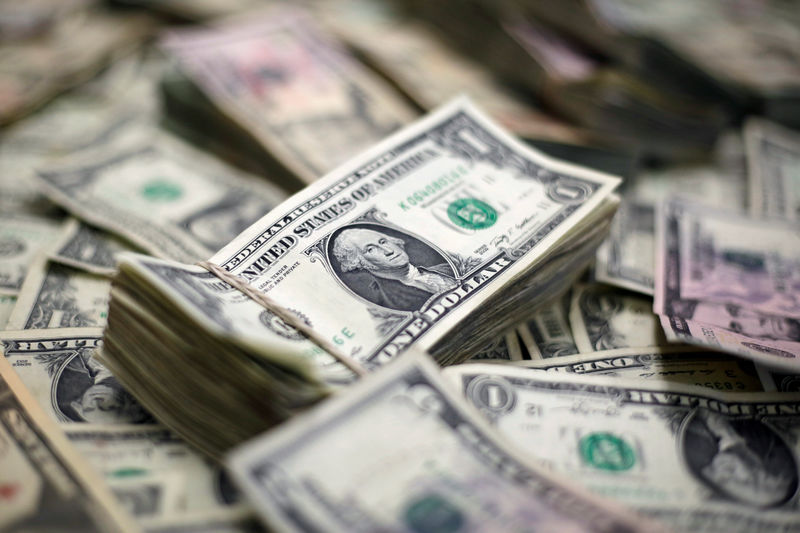US stock futures dip as Nvidia earnings spark little cheer
By Peter Nurse
Investing.com - The dollar traded higher Wednesday, benefiting from the release of strong retail sales during the previous session, while sterling climbed after a hot inflation release pointed to a December Bank of England interest rate hike.
At 2:55 AM ET (0755 GMT), the Dollar Index, which tracks the greenback against a basket of six other currencies, traded 0.1% higher at 95.938, after earlier touching 96.267 for the first time since July of last year.
EUR/USD fell 0.1% to 1.1313, after earlier dipping to a 16-month low of $1.1263, while USD/JPY rose 0.1% to 114.88, climbing as high as 114.97, its highest since March 2017.
The latest catalyst for these dollar gains was the release of surprisingly strong U.S. retail sales data on Tuesday, which climbed 1.7% on the month in October.
This added to the momentum generated last week by consumer prices surging at the highest rate since 1990, and could encourage the U.S. Federal Reserve to accelerate the tapering of its asset purchase program, likely bringing forward the timetable of interest rate hikes.
St. Louis Fed President James Bullard added oil to the fire, stating on Tuesday that the central bank should "tack in a more hawkish direction" over its next couple of meetings.
At the same time, European Central Bank President Christine Lagarde has this week pushed back on the idea of her central bank lifting interest rates in the near future, warning that tightening monetary policy now to rein in inflation could choke off the Eurozone's recovery.
“The euro remains exposed to the downside in our view,” said analysts at ING, in a note, “and our short-term fair value model is showing that a move below 1.1300 would actually be in line with changes in the main drivers: primarily the short-term swap differential, but also the relative shape of the curve, relative equity performance and global risk appetite.”
Elsewhere, GBP/USD rose 0.3% to 1.3463 after British inflation surged to a 10-year high last month, cementing expectations that the Bank of England will raise interest rates next month, which would make it the first G7 central bank to do so since the pandemic.
Consumer prices rose by 4.2% in annual terms in October, a larger rise than had been expected, and a significant jump from the 3.1% increase in September.
This comes the day after the release of stronger-than-expected U.K. employment data even with the end of the government's job-protecting furlough scheme.
AUD/USD fell 0.1% to 0.7300, with Reserve Bank of Australia governor Philip Lowe again pushing back against market pricing for a rate hike in 2022
